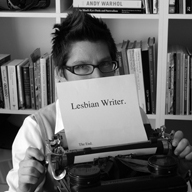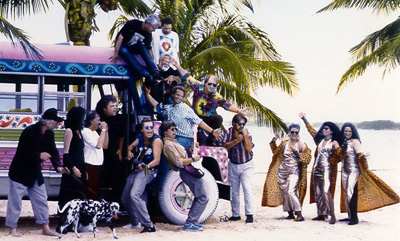I bet when you’re submitting to a magazine you read through your piece checking for all the usual suspects: grammar, punctuation, and spelling. Those are the easy things for us, a practice engrained since grade school. Then it comes time to write your bio and select – ah! – your headshot. It’s frustrating enough to sort through computer files for a picture we actually like of ourselves, or to pose in a never-ending photo session while feeling like Ralphie from A Christmas Story in his bunny outfit. A headshot is not the same as our Facebook profile picture; it’s a professional image used to build our brand and it’s often the first and only visual impression readers and editors have of us. Yikes, no pressure…
Randy Susan Meyers has many excellent tips in “Look Great in your Author Photo!” on The Review Review. Here is a Superstition Review spin on headshots that will help you be ready for publication in our journal:
- Know the specifications. Here at SR we require a high quality headshot with the following specs: .jpg format, minimum 300 dpi.
- Know your colors. We tend to convert photos to black and white here, so be careful to select a picture that isn’t too dark, or too light – we’d like to actually be able to see you.
- Dress to impress. Try to “match” your personality, but do so practically. Just because your smile looks great in it doesn’t mean you should send the pic with you wearing a Family Guy t-shirt. As Meyers points out, “Make certain your clothes send the message you want to project.”
- Know how the picture will be used. We crop every picture at SR into 197×197 pixels – a perfect square. Avoid cropping the pictures yourself, especially if you’re cropping someone else out. That tends to make a rectangle picture that we can’t use. We want you to be the center of our reader’s focus, not the empty space next to you.
- Make use of the space you have. Since you have a limited space to present yourself in it’s important you do it right. A good headshot is generally from the upper chest up – get it? A headshot. While we’re sure you have lovely feet, we’d rather see your face.
- Be aware of your background. Usually, a solid background works best as it means you are entirely in focus. Try to avoid other people/general disarray from showing up in your picture and stealing your thunder. Don’t be afraid of using a different background, just make sure it doesn’t pull a viewer’s focus.
- Be careful of phony or cheesy poses. Steer clear of the “Sears Studio” look. This is not easy to do, especially if you are taking the picture at home. I find this is best neutralized by not trying too hard. There’s a lot of pressure to take a classy photo, but remember, with the internet being the way it is, it’s likely this photo of you will remain in cyberspace forever. Make it timeless. Remember, “Photos freeze you in time. They can’t show all the good (though they can certainly reveal plenty of bad).”
- Practice your smile. How often do we come across old photos where we’re clearly grimacing instead of smiling as Aunt so-and-so snapped an obligated pose? “Smile with your eyes. That’s how you can project warmth,” says Meyers. Keep it light and natural. Show teeth or none, but make sure you decide before you snap the shot, it can mean less “re-dos” on your quest for the perfect shot.
- Be aware of your lighting. Inside is nice because you can control how much light there is, but natural lighting looks wonderful if the picture is shot at the right time of day. There’s no right or wrong to this, only common sense. Don’t wash yourself out.
- Build your brand. This is not always something artists/writers remember. Think of yourself as a creative company and your work as the product. What sort of tone should your “company” have and what sort of impression do you want to make? Make it a clear representation of yourself – no one wants to be lied to, even visually.
A great headshot is possible, just take a deep breath and make sure to think before submitting! Have a look below and see some of the great headshots we’ve had here at SR.
Look at how Kamilah Moon (issue 10) remains professional, but her personality isn’t whitewashed. She’s in focus, the lighting is great, and we get the feeling she’s looking right at us.
Check out Tania Katan’s photo from issue 4. She’s engaging the camera even while hiding part of her face. More than that, she’s not covering her face for the sake of it. She’s making a clear and creative statement that is a part of her brand.
There’s nothing fake about Colton Brock’s smile in his shot from issue 2. This photo is focused solely on his face and his expression looks very genuine.
These guidelines are great, but that doesn’t mean you can’t have fun. We’ve had many creative headshots here at SR and we encourage everyone to think outside the box – just make sure you can fit inside our 197×197 one. And Meyers has one other great tip I’d like to leave you with: “Look on professional photographers’ sites for hints on make-up, clothes, and other facets of preparation for a photo session.” It’s not cheating if you research before taking a picture and you’ll feel more comfortable by having a better sense of what to do.





